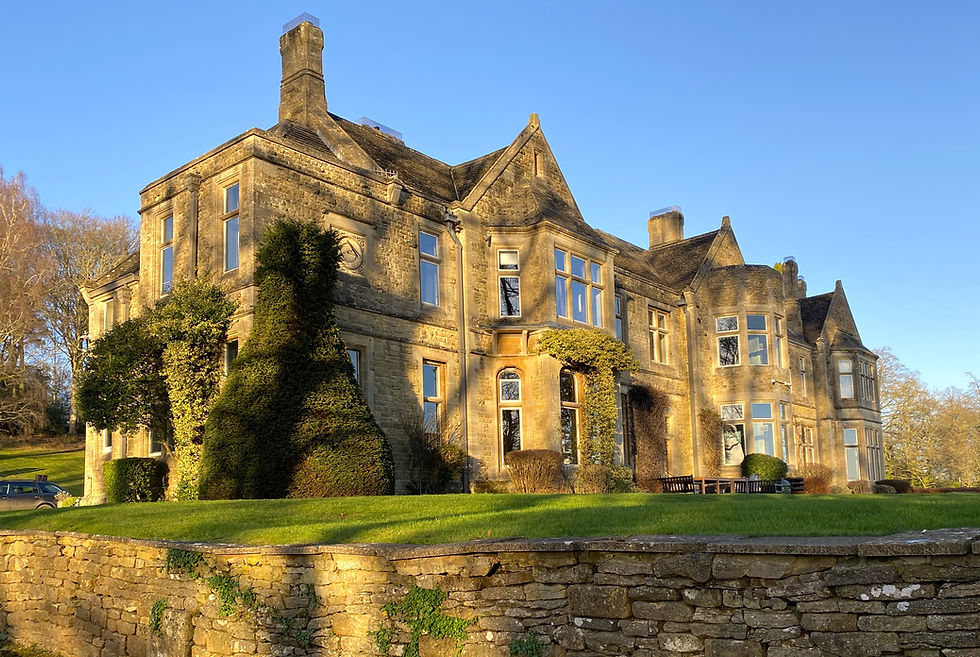Windows: a pane
- Lucy Jarvis
- Nov 4, 2020
- 4 min read
Updated: Jul 31
By Jonathan Edis
Few subjects excite so much controversy amongst heritage specialists as replacement windows. Writing in February 2017, Historic England said (in Traditional Windows: Their Care, Repair and Upgrading) that “The loss of traditional windows from our older buildings poses one of the major threats to our heritage”. More recently, Historic England’s guidance in Modifying Historic Windows as Part of Retrofitting Energy-Saving Measures states that England’s existing buildings have an essential role to play in fighting climate change. Both these statements may be true, but I think we need to be clear as to whether we are architectural historians, first and foremost, or whether we are climate activists.

Whether they are made of timber or metal, windows are indeed vulnerable, because replacing them is relatively affordable. They are also exposed to the rigours of the weather on one side, and condensation on the other, so they tend to deteriorate over time. Like it or not, people are not great at maintaining windows. In a world where replacement is thought of by many as preferable to repair, we all have a challenge. Speaking personally, I think this challenge is more likely to be resolved if we debate it and work out a way forward. Simply telling people they have to accept certain ideas as though they are fundamental truths, or that they have no option but to install secondary double glazing, is not going to work forever. To be effective, conservation needs to be credible, and that means engaging with the hundreds of thousands of people who own and use the many millions of windows in our historic buildings, and who have responsible views and opinions about thermal efficiency, aesthetics, and climate change. Conservation needs to be collaborative – and sometimes that means letting go.
Don’t get me wrong. I’m all for the preservation of historic windows when they really do contribute to something significant. As a general rule, I would say that the replacement of any windows dating before c.1800 should normally only be contemplated when they are truly beyond repair, and that the usual response should be an accurate replacement, using matching materials and designs. Even in post-1800 buildings of special interest I would normally advocate conservation, or conservative repair, as an alternative to replacement - at least for windows on publicly visible elevations. It is unlisted 19th and 20th century buildings that pose some of the biggest issues, often in connection with mass-produced sash windows of the period 1850 to 1914. More specifically, many of these cases involve unlisted houses in conservation areas, sometimes subject to Article 4 Directions that impose additional planning controls. It is a debate that is not going to go away. Each decade that passes will (whether we prod people or not) probably add to the trend of under-maintenance, and to the natural deterioration of the windows over time. Moreover, I doubt whether the pressure for replacement windows is going to abate in the future, any more than climate change will stop happening. If these really are major threats, we need to be dealing with them now, not in the 2070s when the problem will surely be more acute. We can go on issuing guidance, and enforcing and prosecuting and arguing, but perhaps it is time to look at ourselves and think it possible we should adapt our own mindset.
I am not suggesting or advocating that we deregulate controls over all post-1800 windows, and consign them to the skip. All I am saying is that, if conservation is about handing the good things from the past onto those who follow in our footsteps, let us leave them some good windows in some special buildings and special places. If we are going to do that, we need to be clear in our thinking, and in our priorities.
Speaking from personal experience, I have had some very curious and inconsistent experiences with windows in the last three decades. I can point to at least one appeal that was allowed in respect of replacement windows in a grade II listed building in Kent, possibly designed by Sir George Gilbert Scott. I can attest to at least one successful application for the total replacement of windows (including horn-less sashes of c.1825) in a grade II listed town house in Essex. In both cases, “slimline” double glazed sealed units were involved. On the other hand, I have seen an appeal dismissed in London, in which replacement 1970s single glazed sash windows in a grade II listed terrace were held to be worthy of preservation. Clearly, there is sometimes tension between the guidance and development management. We need a mature national debate, and a comprehensive strategy set in the context of the centuries that we expect these windows to last, and in their role as part of climate action. Above all, we need to listen to those who want to replace windows, and try to understand their point of view, even if we do not always agree with everything they say.
.png)



Comments